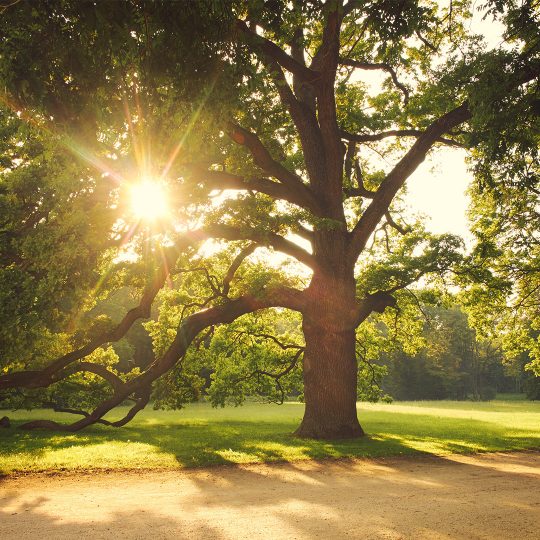Signs of Heat Stress in Plants
Ways to Help Beat the Heat
Posted
July 25, 2024

During the hottest days of summer, think of how welcoming shade, water, and a breeze can feel. While we can retreat indoors to cool off, trees and other outdoor plants don’t have this option. This is where you come in to help. Learn the signs of plant heat stress and what you can do to help them beat the heat.
Signs of Stress in Plants
Every summer seems to get hotter and hotter. Plants that used to survive the summer season may not be able to adapt to rising global temperatures. Not only does heat stress impact plant health, but it can also lead to reduced growth, lower crop yields, and even death. But there are ways you can help maintain a healthy yard and garden. First, it’s important to recognize the signs of heat stress.
- Wilting and Curling. Leaves and stems become limp and droop when the plant loses more water through transpiration than it absorbs from the soil. Leaves also curl to minimize sun exposure and reduce transpiration.
- Leaf Scorch and Sunburn. When the leaf is exposed to excessive heat and sunlight, it can dry out and turn brown or yellow around the edges. If the leaves appear bleached with white patches it indicates tissue damage from sunburn caused by intense light.
- Flower and Fruit Drop. Plants that bloom over the summer may drop their flowers prematurely or not produce as many blossoms. High temperatures can also cause trees to drop undeveloped fruit in order to save energy.
- Stunted Growth. Heat-stress can disrupt photosynthesis and nutrient intake, which results in slow or stunted growth.
If you notice any of these signs of stress or additional issues appear this time of year, it’s best to take action as soon as possible to reduce further damage.
Preventing Plant Heat Stress
Even though you can’t control the weather, there are ways to help ensure your plants survive the season. By adopting preventive measures and acting as soon as you notice any red flags, you can give your plant the heat relief they need.
- Plant Selection. Some plants are more heat tolerant than others. Choose native varieties known for adapting to your specific climate.
- Shading. Certain species of plants grow better in full sun or shade. Be sure to follow these instructions when planning your garden. You can also use taller plants as shade for shorter varieties. If more shade is needed, use temporary clothes to help provide some relief from intense light, especially during peak sun hours.
- Managing Soil. Test your soil to gauge nutrient levels and give your plants the best shot at healthy root growth. Well-structured soil that’s aerated and pH balanced is better at retaining moisture and providing a pathway for water to reach the roots and drain properly.
- Proper Watering. Hydration is crucial during the dry, hot summer. However, there may also be more restrictions during a drought. The best course of action is to make the most out of watering your plants. Water in the early morning to reduce evaporation and allow plants to absorb moisture before the hottest part of the day. Deep, infrequent sessions help encourage deep root growth. Getting enough water down to the roots give plants access to moisture in deeper soil layers during dry periods.
- Mulching. Apply a few inches of organic mulch—straw, wood chips, or compost—around trees and plants to help retain soil moisture, regulate soil temperature, and reduce evaporation.
Keep an eye on your plants this season, especially during droughts and heatwaves. When you detect heat stress early enough you could save the plant and your well-planned garden. Contact Elite Tree Care at the first signs of plant stress. We have the knowledge and techniques to help minimize the impact of heat stress and implement effective strategies for your plants to thrive.